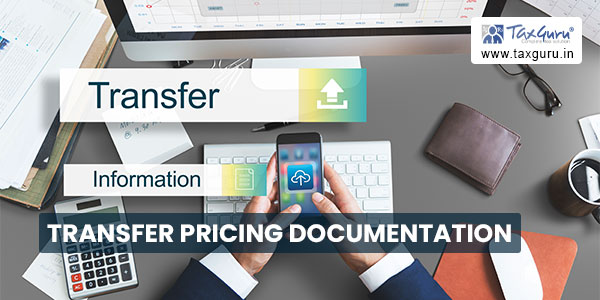In India, though the Income Tax Act contained the concept of Transfer Pricing in Income Tax Act, 1922 itself, Globalisation & Liberalisation in the year of 1991, have led to the drastic increase in cross-border transactions thereby the need for sharing country’s revenue in a conscious and justified fair manner.
Before going to TP documentation, better understand the concept of Transfer Pricing.

What Transfer Pricing means?
In general Transfer price is the price at which related parties transact with each other, such as during the trade of supplies or labor between departments of same entity or between different entities of same Group.
However, if the entities are residents of different countries, then the problem arises, in which country the group (MNE) is parking its profits for whatever the reason. Every market player tries to arrange the things in such a manner to reduce the tax liability and on the other side, every country seeks to retain its fair revenue and this leads to the concept of Arm’s Length Pricing.
Arm’s Length Price:
Arm’s Length Price can be understood as a price which can be fixed to the transactions between two unrelated entities.
In India, the Tax department has drafted rules and entered into treaties with other countries in such a way to let every entity operating from India maintain its fair share in profits thereby retaining its revenue in India and duly paying Indian taxes.
So, to justify that an entity has maintained its fair share, an entity should maintain proper documentation which reflects the ALP of the international transactions it has entered into. The compliance obligation can be drawn from Section 92D of Income tax Act, 1961.
And with the guidance of Organization for Economic Co-operation & Development (OECD) on documentation, the Indian tax authorities have included Sec 286 in the Act which obligates the entities to maintain 3-tier documentation for every constituent entity of an international Group.
- Country by country report
CbCR is to be prepared by an international group having consolidated turnover exceeding INR 55,000 Million (USD 840 Million) during the preceding accounting year. The report is to be furnished on or before the due date for the filing the return of income specified under Section 139(1) of the Act.
Below are the Forms and their timelines for filing CbCR :
- Master file
MF is to be prepared and filed by a constituent entity (‘CE’) of an international group, where:
(1) The consolidated revenue of the international group for the accounting year exceeds INR 5,000 Million (USD 70 Million); and
(2) [i] The aggregate value of the international transactions during the accounting year exceeds INR 500 Million (USD 7 Million) or
(2) [ii] the aggregate value of international transactions involving intangible property exceeds INR 100 Million (USD 1.5 Million) The due date for furnishing the MF is the due date specified under Section 139(1) of the Act.
Below are the Forms and their timelines for filing Master file:
For an entity, though not being a Constituent entity of an International Group but has entered into international transactions with related entities must maintain below documents.
1. TP study/ report is the documentation maintained to review TP arrangements for transactions taking place between different entities of same group (IGS). Primary objective of the TP report is to review the arm’s length (fair price) nature of transactions taking place between different entities of an MNE.
A typical TP study report contains below elements:
- Executive summary
- Group overview
- Industry overview
- Functional Analysis( Functions, Assets & Risks)
- Selection of Tested Party
- Selection of Most Appropriate method(MAM)
- Application of MAM to the international transaction.
- Arriving at ALP
- Conclusion
2. 3CEB report duly certified by an accountant within due date u/s 139(1) which is nothing but a summary of elements in TP study report.
What is the cost of non-compliance?
Non- compliance of documentation prescribed u/s 286 attracts below consequences:
To better understand your obligations with respect to documentation part for a particular transaction entered by you, consult the concerned professional.





